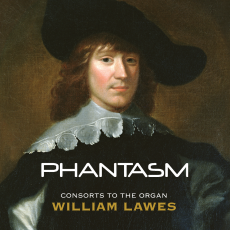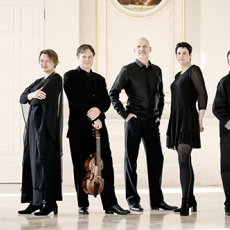Phantasm - Lawes: Consorts to the Organ - Early Music America
An Apprentice to composer John Coprario and a mainstay at the court of Charles 1 (who dubbed him "Master of Music" and declared a time of mourning when he passed), William Lawes (1602 - 1645) is still known for his unconventional style, reaching its apex in the seven Consorts for Organ. These sets for five to six viols and continuo organ take formal liberties in their alternation of movements based in dance, sacred, and folk themes, as well as their rapid shifts to affect within each movement. Harmonic risks also abound, with a few outright rough edges adding further interest. In his liner notes to this disc, Phantasm director Laurence Dreyfus frequently resorts to terms such as "awkward, ugly, craggy" and "bizarre" to describe Lawes' soundscape.
It's hard to argue with either Dreyfus' descriptions or his ensemble's completely natural interpretation of Lawes' unusual works. The Air a 6 in G Minor exemplifies their effortless yet engaged approach: Phantasm handles the racing lines and battlefield ambiance confidently, yet without histrionics or smoothing anything over.
Lawes' distinct touches, such as his frequent "missing notes," his fun with pedal points in the Air a 5 in C Major, the sad, broken cadence in the Paven a 6 in G Minor, and the three-note signatures in both the Fantazia a 5 and Paven a 5 in C Minor, are ear-opening without turning pedantic. Dissonances such as the "foul diminished fourths" of the Fantazia a 5 in C Minor, or the Fantazy a 5 in C Major's vacillation between mirth and melancholy, tug at the listener. The pungent seventh chord that closes the Fantazy a 6 in F Major actually resounds with real shock, despite modern ears being far more familiar with such techniques than Lawes' contemporaries.
Lawes' daring music was written for small audiences at the royal apartments, and Phantasm maintains that sense of intimacy throughout this recital. Reflective moments such as the pastoral Paven a 5 in C Major or the glowing sadness of the Paven a 5 in C Minor highlight Phantasm's sheer purity of tone and textural clarity. Parts stay transparent (down to plummy bass lines and organ, which gets the spotlight in the Fantazy a 6 in G Minor) even during rich massed effects. The first Fantazy a 6 in F major, without a clearly defined subject or narrative, turns into a beautiful, dynamic work of sonic architecture that impresses regardless of historical ear. The group's choices of tempo are modest for both fast and slow movements but remain effective.
Some listeners may find the Oxford-based Phantasm cool, yet most will probably admire their sense of balance. Their knowledge and love for this music is obvious, with the clear acoustics of St. Martin's Church of East Wooday and warm engineering capturing every detail.

